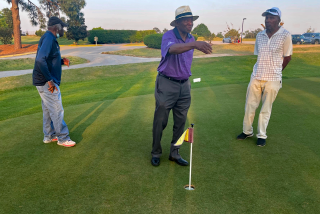Golf ‘s Big-Bang Theory
- Share via
The sweet “tick” of an old persimmon driver squarely striking a golf ball was one of the most satisfying sounds in the game, and the designers of metal golf clubs well understood how critical sound could be in a golfer’s perception of performance. Callaway’s original Big Bertha drivers, in fact, were filled with foam to make them sound more like a wooden driver.
But in late 1992, according to Scott Kramer, a senior editor of Golf magazine, Callaway removed the foam from the hollow Big Bertha and slightly thickened the club-head walls. The resulting sound was far different from other drivers on the market, a ringing toink! that Big Bertha designer Richard Helmstetter said initially “freaked everybody out.” But as sales of the driver took off, Kramer wrote, golfers began to conclude that “a big drive should make a big bang, and many golfers think they’ve crushed one only when the metal head rings like a church bell.”
Tests have shown that louder drives don’t necessarily go farther, but as with so many other things in golf, perception can become reality. In a story in the December 2001 issue of Golf magazine, Kramer quoted one club-company executive who claimed that sound had become “more important than actual performance” and noted that Callaway even acquired a patent to put “sound-enhancing” devices inside a composite club head then under development.-- M.J.S and P.J.K.
More to Read
Go beyond the scoreboard
Get the latest on L.A.'s teams in the daily Sports Report newsletter.
You may occasionally receive promotional content from the Los Angeles Times.










